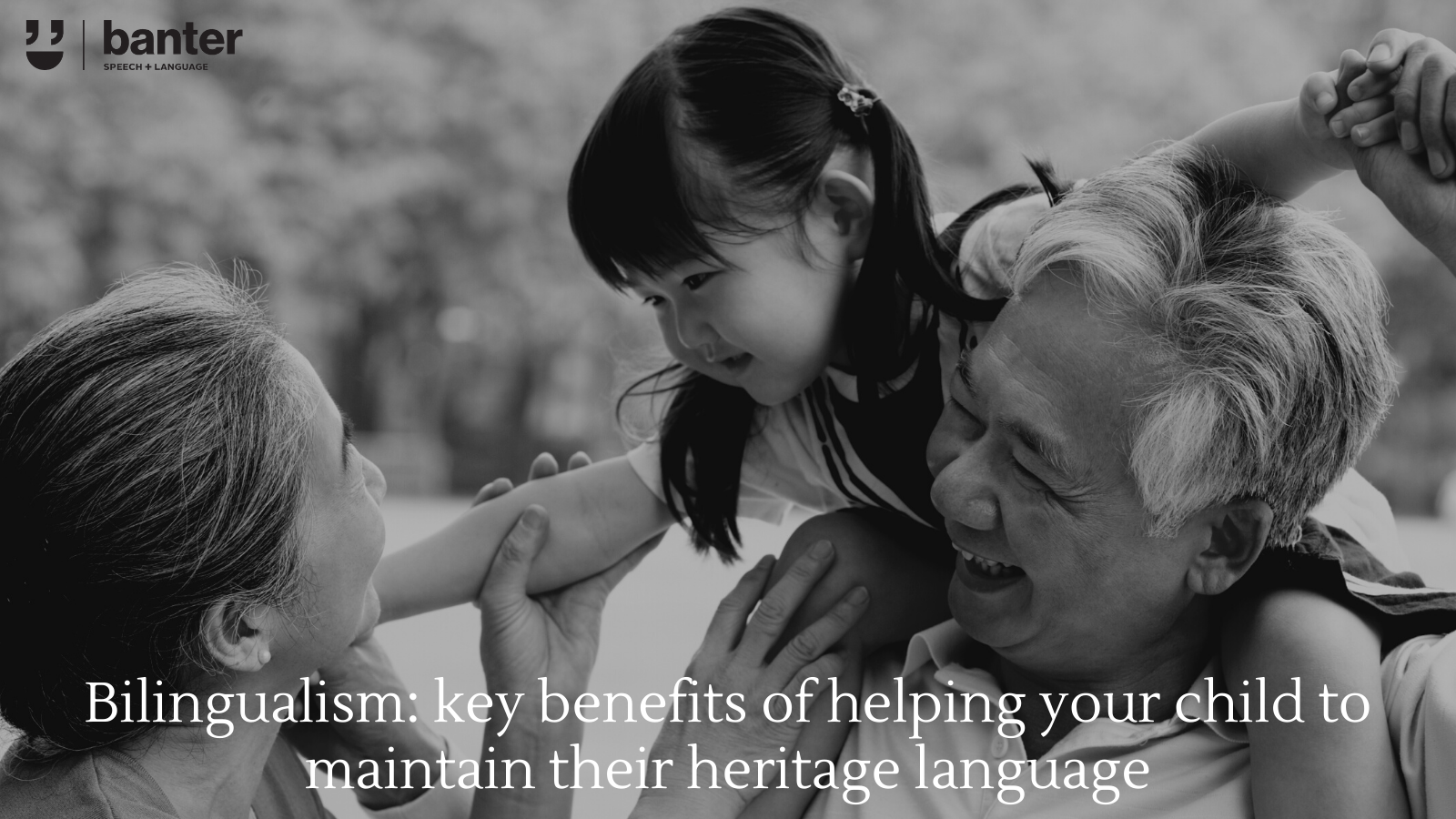Bilingualism: key benefits of helping your child to maintain their heritage language
Many of our clients are learning more than one language. Over the years, we’ve shared lots of evidence-based information and tried to debunk some of the more common (and persistent) myths about bilingual development. We’ve also written about the silent period that some young children go through when they are first exposed to a second language, e.g. in childcare, preschool, or kindergarten.
As a bilingual speech pathologist, I know the personal, family, social, and professional benefits of learning to speak, read, and write in more than one language. But I’ve also had first-hand experience of how challenging it can be to keep using your first language when you start school and find that English is spoken almost exclusively:
- by many of your friends and teachers; and
- out and about in your local area.
In this article, I want to look at why maintaining your heritage language is important and what you can do to help your child maintain their heritage language.
Heritage language and heritage language maintenance
A heritage language is any language – other than the dominant language used in your community – that has a significant connection to your family. For example, since I was born and raised in Hong Kong for the first six years of my life, my heritage language is Cantonese.
Heritage language maintenance is the preservation of that language across generations. For example, it’s very important to my parents and other family members that we speak with each other in Cantonese, especially as many members of my family remain in Hong Kong.
Key benefits of maintaining a heritage language
By supporting your child’s development of their heritage language, you:
- strengthen their family and cross-generational bonds with other family members;
- develop their sense of identity and confidence; and
- expand their social network within the wider community.
Although I didn’t know it at the time, I was lucky. I grew up in a Cantonese speaking home, went to Chinese school, and regularly read in Chinese (thanks to the subtitles on Hong Kong TV shows!). I regularly ‘code-switch’ (alternate) between English and Cantonese, depending on who I am speaking with and in what context. Thankfully, this has allowed me to maintain close relationships with my relatives in Hong Kong. I can talk to them on the phone and read the messages they send.
Professionally, bilingualism has helped me to support Cantonese-speaking clients and their families and to provide evidence-based advice about bilingual development with the benefits of real world experience.
Three things you can do to help your child learn and maintain a heritage language:
- Use your heritage language at home: As a rule of thumb, your child needs to hear a language at least 20-30% of the time to use it. When you use your heritage language regularly at home, you are sending a message to your child that the language is important!
- Consider sending your child to a language school: If your child only hears another language spoken at home, they are less likely to know how to read and write in that language. By going to a language school, your child will learn how to listen, speak, read and write in their heritage language and develop higher level language skills in an academic setting.
- Visit communities and places where your heritage language is spoken: Take your child to places where they will see and hear your heritage language being used in the community (e.g. restaurants, community events, newspapers, signs where they will see and hear heritage language being spoken or written). Immerse your child in the community to teach them that learning another language gives them opportunities to explore new places and meet new friends!
Clinical bottom line
Learning English as a second (or third or fourth) language can take time and is not a language disorder. I’m proud of my bilingualism and use my language skills in both languages every day. Growing up speaking, reading, and writing in more than one language has several cultural, family, social, and professional benefits – especially as our world gets smaller and more connected, and as our local communities become more ethnically, culturally and linguistically diverse.
Principal source: Yu, B. & Epstein, L. (2021). Foundations in Bilingual and Biliterate Learning and Development. Foundations in Bilingual and Biliterate Learning and Development.
Related articles:
- My child is learning two languages: what do I need to know about bilingual development?
- Help! My bilingual child just started preschool but won’t speak! (FAQs on the “Silent Period”)

Hi there, I’m David Kinnane.
Principal Speech Pathologist, Banter Speech & Language
Our talented team of certified practising speech pathologists provide unhurried, personalised and evidence-based speech pathology care to children and adults in the Inner West of Sydney and beyond, both in our clinic and via telehealth.








